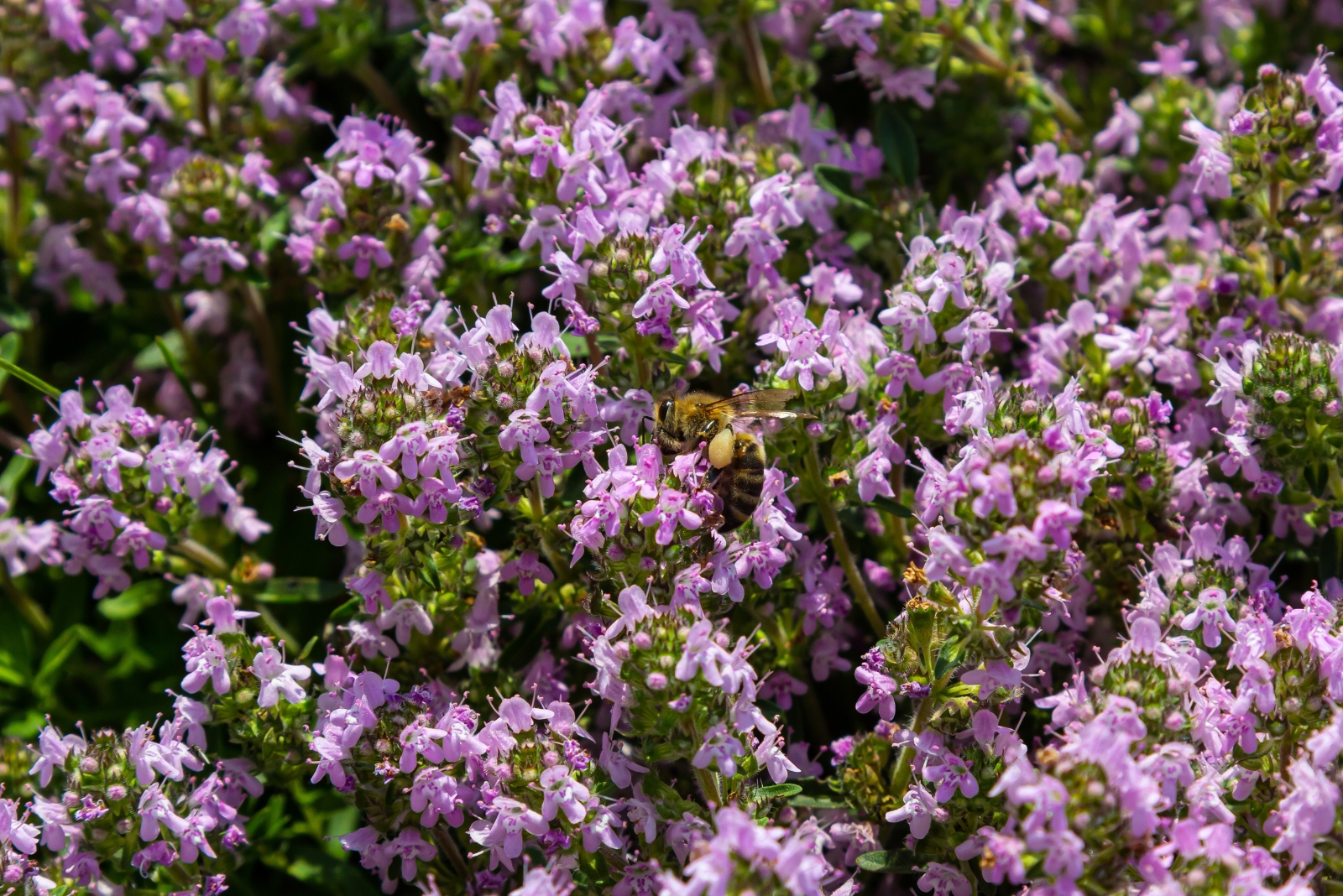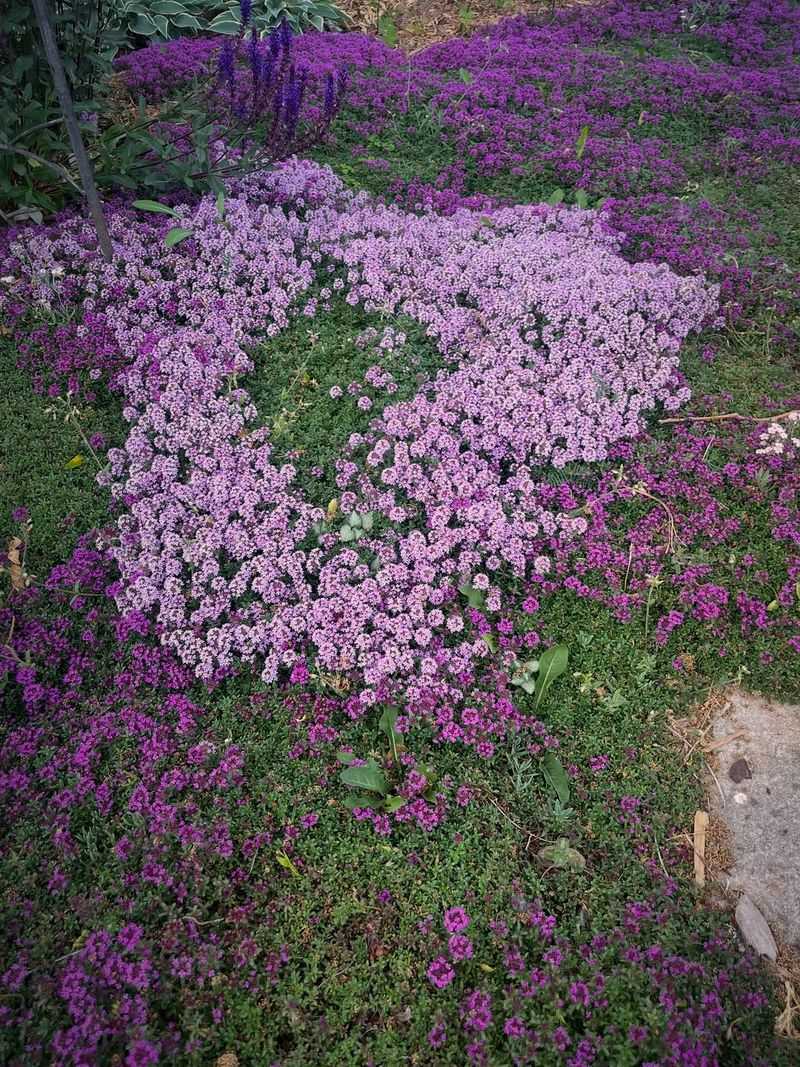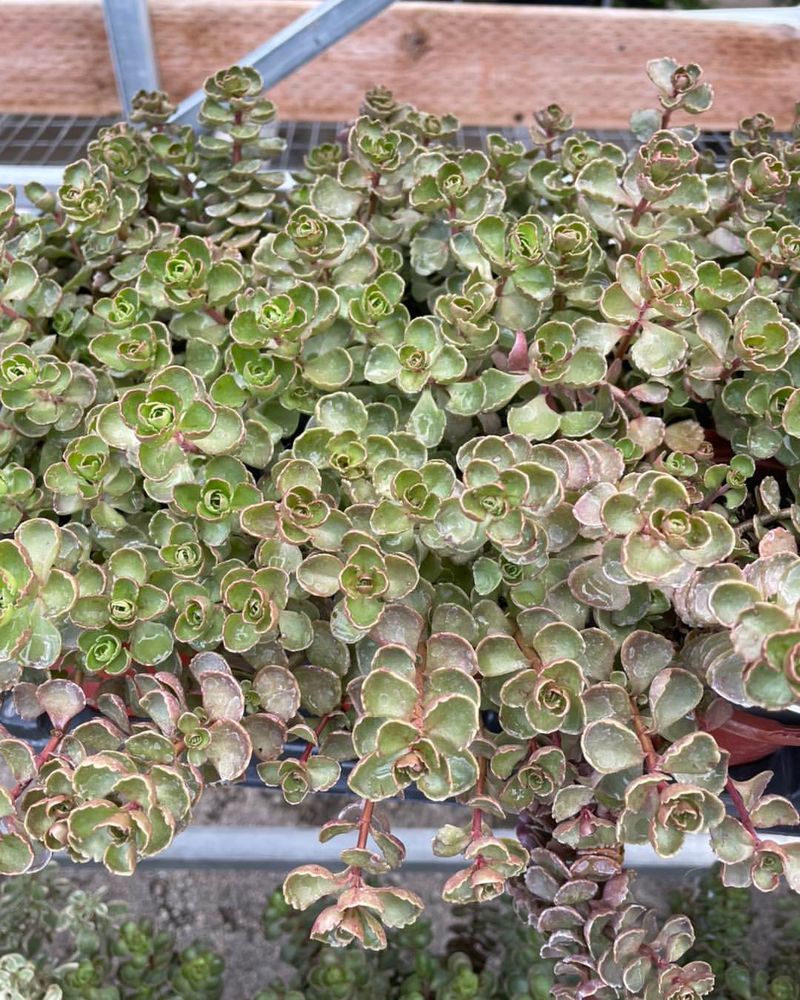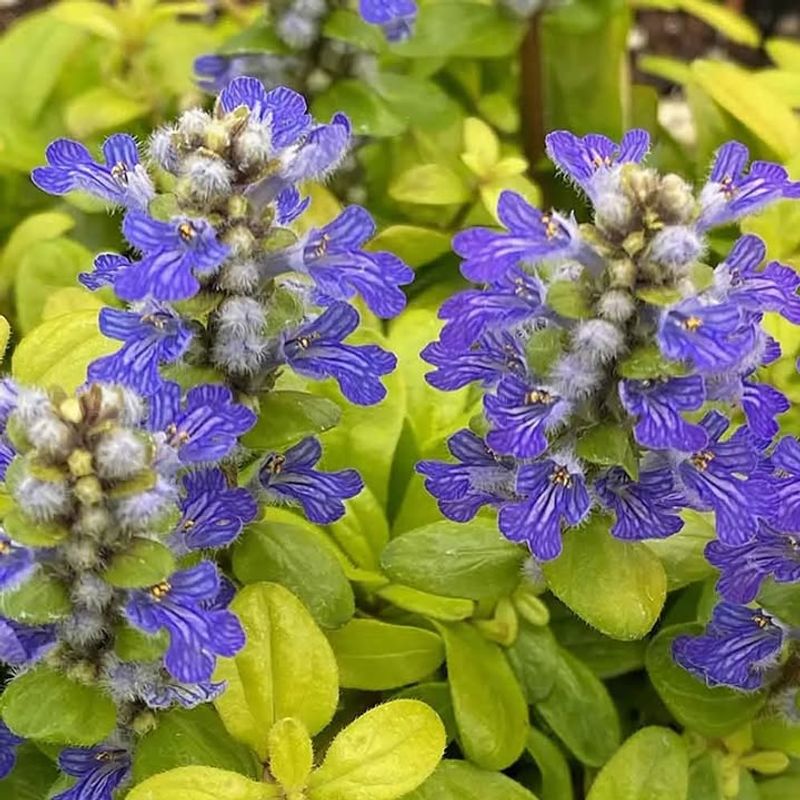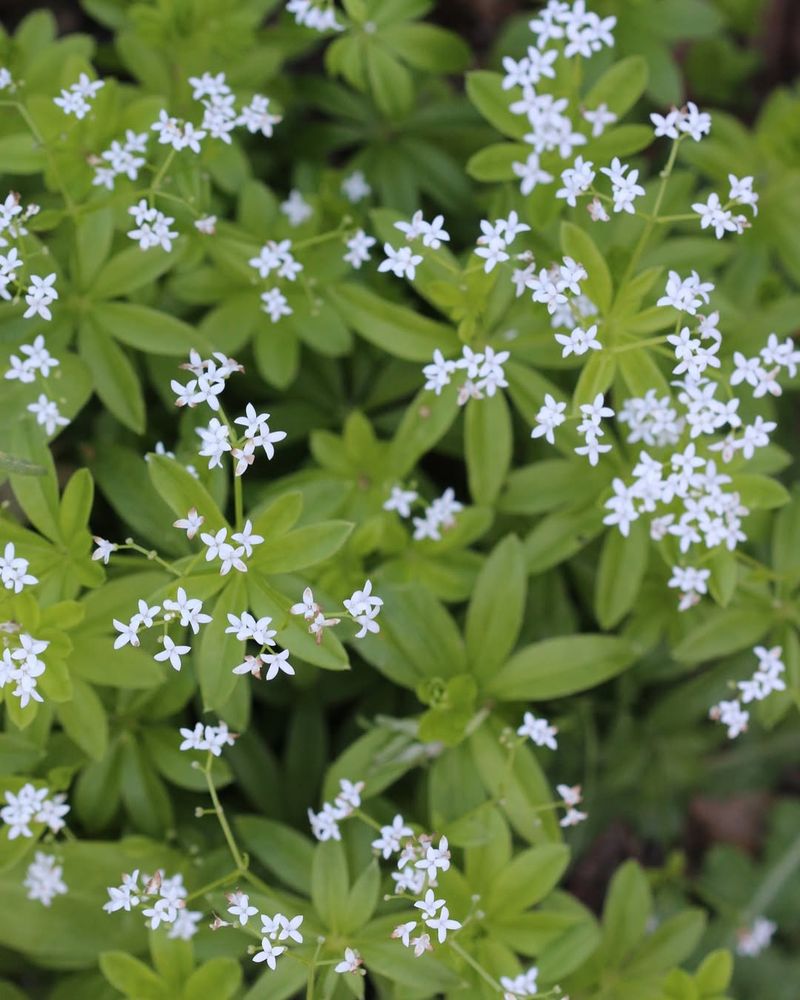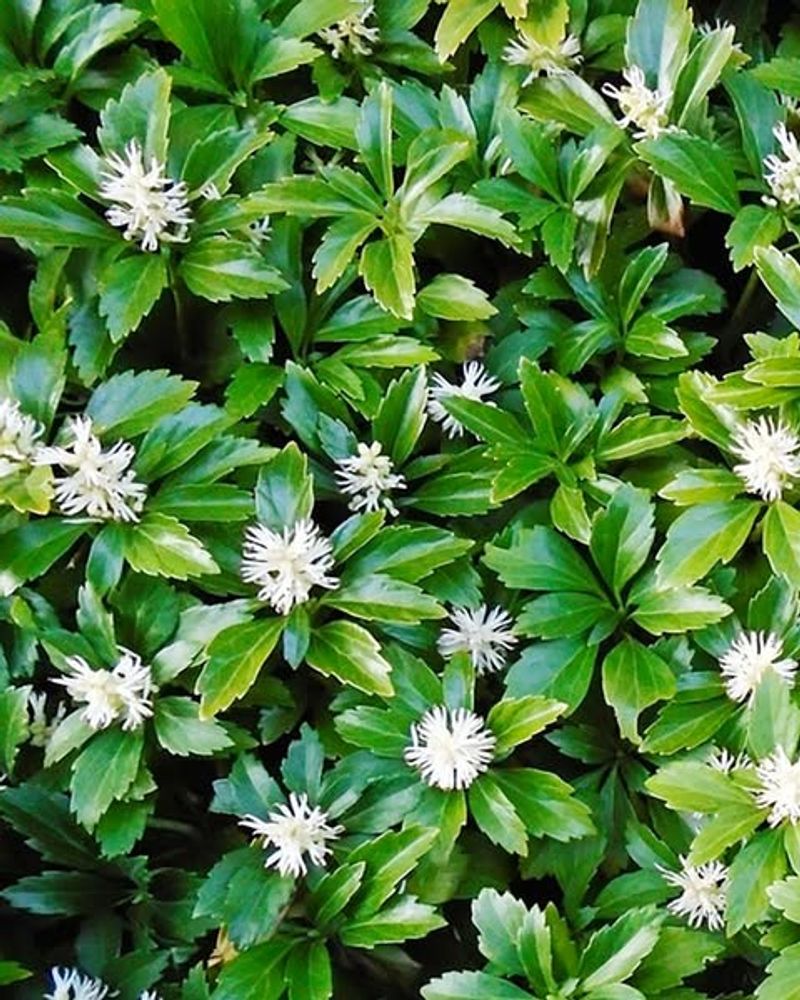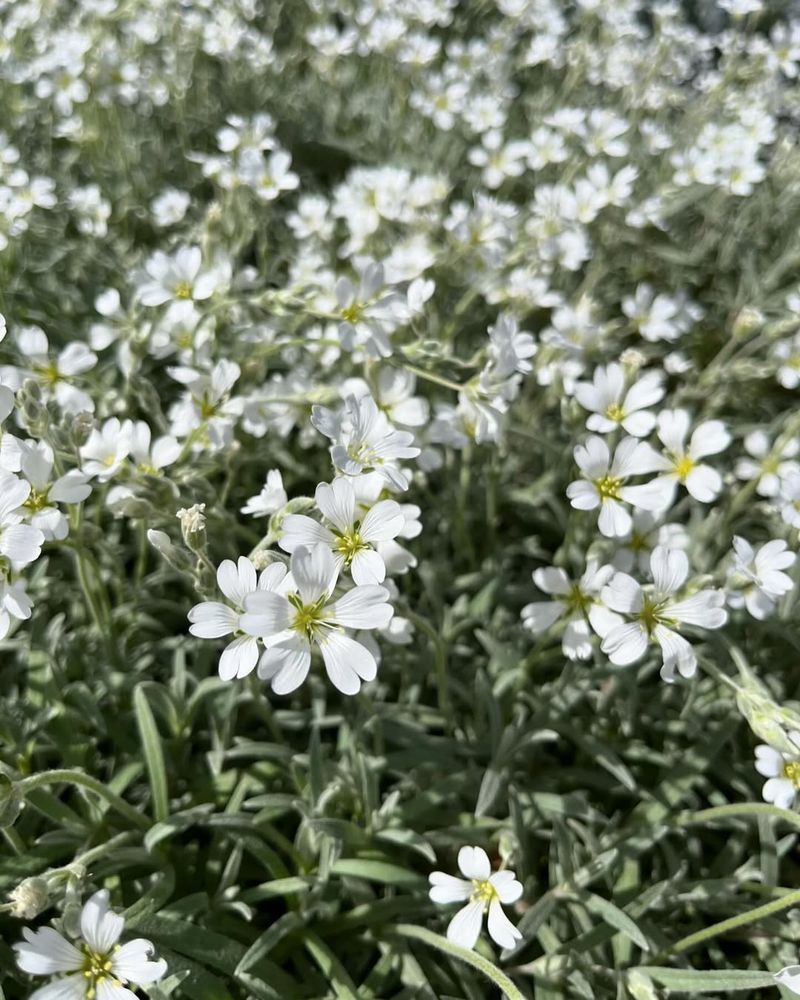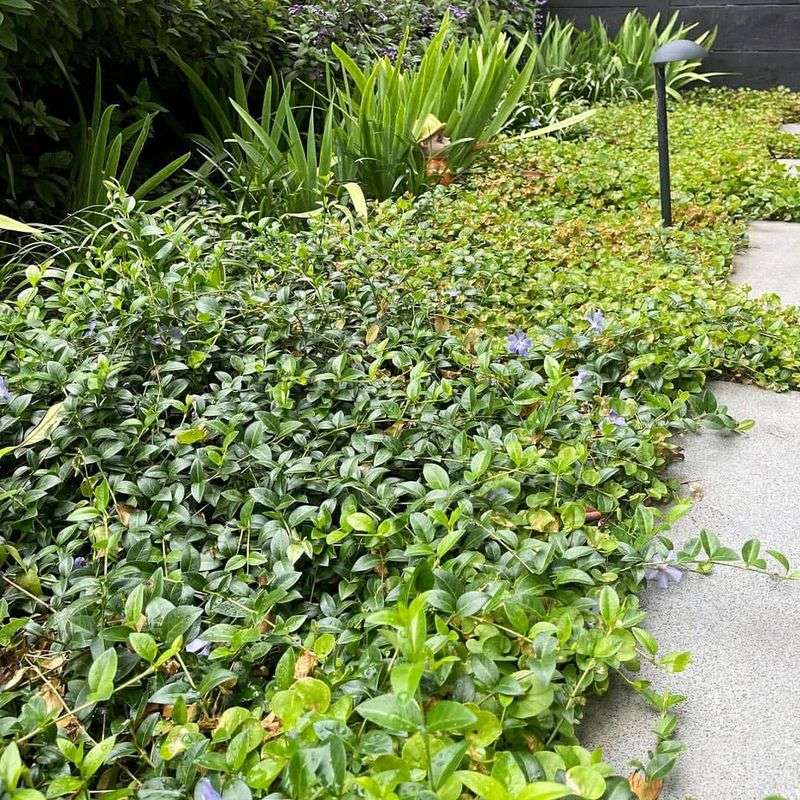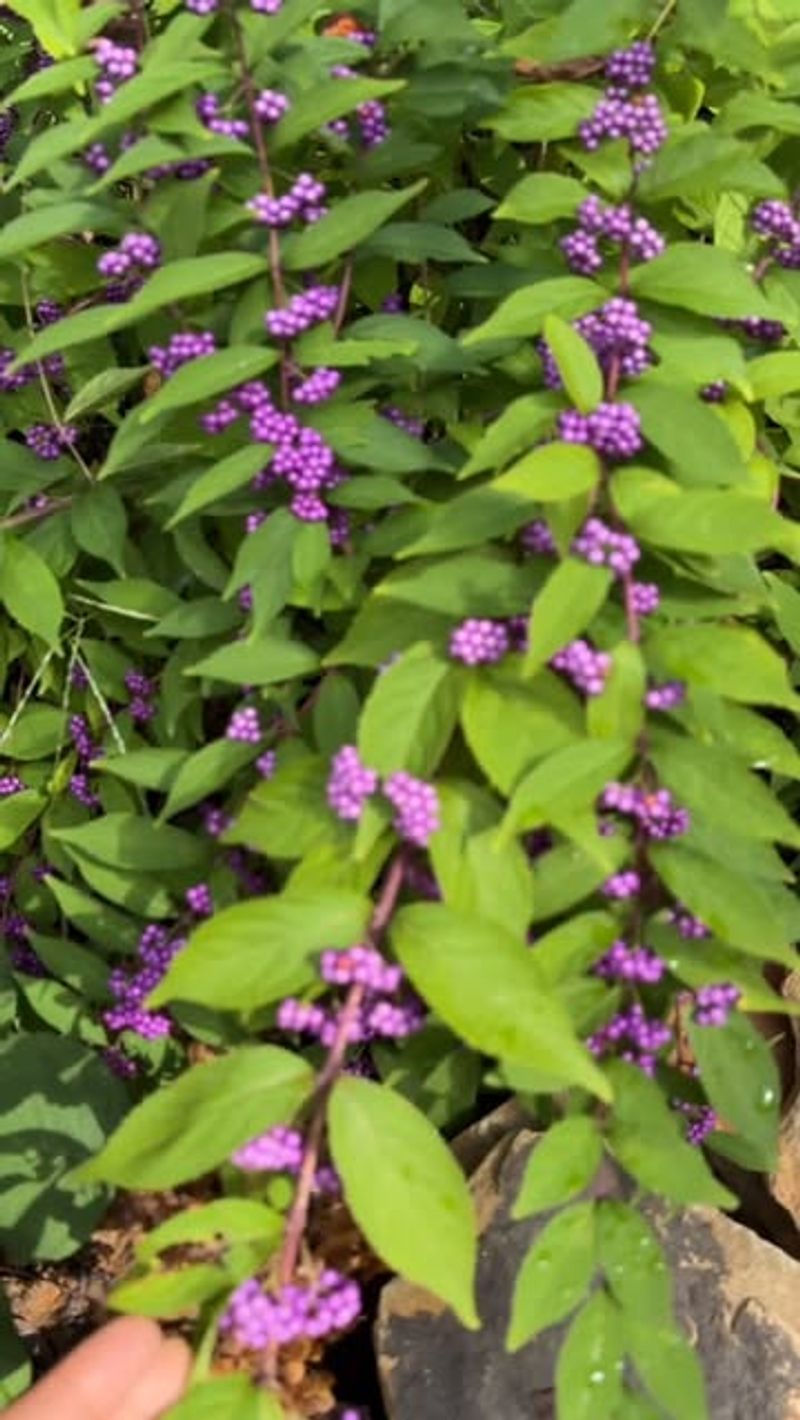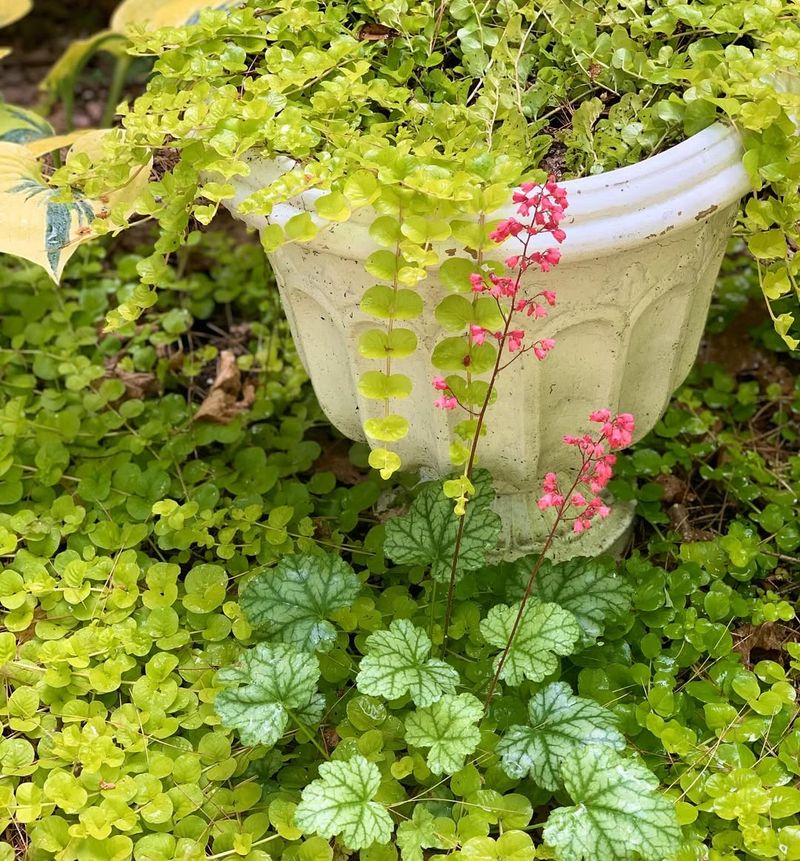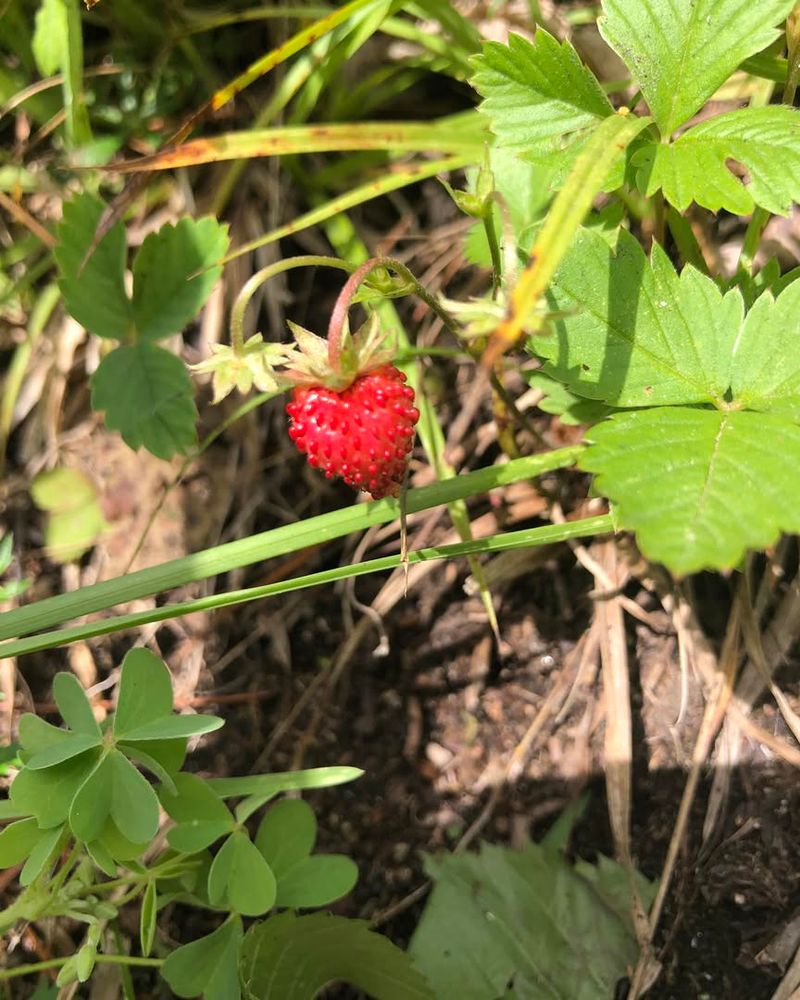Finding a good ground cover in Kansas can feel like a small victory when you’re staring at stubborn bare patches. I’ve tried plenty of options, and a few became instant favorites.
It’s nice watching those empty spots fill in with something green and lively. Here are the ones that worked the quickest for me.
1. Creeping Thyme
Walking across this fragrant plant releases a wonderful herbal scent that makes your garden smell amazing. Creeping thyme spreads quickly across bare spots and forms a thick carpet that can handle light foot traffic.
Kansas gardeners love how it blooms with tiny purple or pink flowers in summer. It thrives in full sun and tolerates drought once established, making it perfect for our unpredictable weather. Plus, bees and butterflies visit the flowers constantly during blooming season.
2. Sedum
Succulents might seem like desert plants, but many sedum varieties handle Kansas conditions beautifully. Their thick, fleshy leaves store water, so they survive hot summers without constant watering.
Different types offer various colors from green to purple to blue-gray. They spread moderately fast and create interesting texture in problem areas. Most sedums produce star-shaped flowers that attract pollinators, and they stay evergreen through mild winters in Kansas.
3. Ajuga
Also called bugleweed, this tough plant conquers shady spots where grass struggles to grow. Ajuga sends out runners that quickly fill bare areas with glossy, colorful foliage.
In spring, it produces beautiful blue or purple flower spikes that stand above the leaves. Kansas gardeners appreciate how it handles both shade and sun, though it prefers some protection from intense afternoon heat. The leaves come in shades of green, bronze, or burgundy depending on the variety you choose.
4. Creeping Phlox
Imagine a carpet of bright flowers covering your bare spots each spring! Creeping phlox puts on an incredible show with blooms in pink, purple, white, or red.
The evergreen foliage stays attractive year-round in Kansas, forming a dense mat that crowds out weeds. It works wonderfully on slopes where erosion is a problem. After the spectacular spring bloom finishes, the needle-like leaves continue providing green coverage throughout summer and fall.
5. Sweet Woodruff
Perfect for those difficult shady areas under trees, sweet woodruff creates a lush green carpet that looks almost magical. Its tiny white flowers appear in late spring and smell like vanilla when dried.
The leaves grow in attractive whorls around the stem, giving it a unique appearance. Kansas gardeners use it under deciduous trees where it spreads steadily without becoming aggressive. It prefers moist soil but tolerates dry shade once established in your landscape.
6. Lamb’s Ear
Kids love touching the incredibly soft, fuzzy leaves that feel just like a lamb’s ear! The silvery-gray foliage brightens up bare areas and contrasts beautifully with darker plants nearby.
It spreads at a moderate pace and handles Kansas heat remarkably well. The thick, hairy leaves help it conserve moisture during dry spells. Tall flower spikes emerge in summer, though many gardeners remove them to keep the plant compact and focused on covering ground quickly.
7. Pachysandra
For deep shade where almost nothing else will grow, pachysandra comes to the rescue. Its glossy, evergreen leaves form a thick blanket that suppresses weeds effectively.
Kansas gardeners plant it under large shade trees or along the north side of buildings. It spreads through underground stems and fills in bare spots within a couple of seasons. Small white flowers appear in spring, though the main attraction is the reliable, year-round green foliage that stays attractive through winter.
8. Snow-in-Summer
When this plant blooms, it looks like someone scattered fresh snow across your garden! The masses of tiny white flowers completely cover the silvery-gray foliage in late spring.
It grows rapidly in Kansas, especially in hot, sunny locations where other plants struggle. The silver leaves reflect sunlight, helping the plant stay cool during summer heat waves. It works wonderfully in rock gardens or cascading over walls, and it handles poor, dry soil better than most ground covers available.
9. Vinca Minor
Also known as periwinkle, this evergreen vine solves multiple problems at once. It grows in sun or shade and spreads steadily to cover bare ground with glossy, dark green leaves.
Pretty blue-purple flowers appear in spring and sometimes rebloom in fall across Kansas landscapes. The trailing stems root wherever they touch soil, helping it fill in quickly. Once established, it forms such a dense mat that weeds have almost no chance of breaking through the coverage.
10. Mazus
Looking for something to plant between stepping stones or pavers? Mazus handles foot traffic surprisingly well while staying short and compact.
In spring, it produces adorable purple or white flowers that cover the tiny leaves. Kansas gardeners appreciate how it stays green and spreads quickly in both sun and partial shade. It prefers consistently moist soil, so it works great in areas that receive regular watering. The low-growing habit means you never need to trim it.
11. Creeping Jenny
Bright chartreuse leaves make this ground cover stand out from across the yard! Creeping Jenny spreads rapidly, sending out long stems that root along the way.
It works especially well in moist areas where other plants might rot. Kansas gardeners use it near downspouts, around water features, or in low spots that stay damp. The golden foliage brightens shady areas and looks stunning trailing over container edges. Small yellow flowers appear in summer as a bonus feature.
12. Wild Strawberry
Why not grow something beautiful and edible at the same time? Wild strawberry plants spread through runners and quickly cover bare spots with attractive three-part leaves.
White flowers appear in spring, followed by tiny but delicious red berries that taste sweeter than they look. Kansas wildlife, especially birds, enjoy the fruit as much as people do. The plants stay short, handle light foot traffic, and work in sun or partial shade throughout your landscape.

